Ski: 2022-2023 Meier Leeper, 185 cm
Test Location: Crested Butte Mountain Resort, Colorado
Days Skied: 5
Available Lengths: 178, 185, 192 cm
Blister’s Measured Tip-to-Tail Length (straight-tape pull): 183.7 cm
Blister’s Measured Weight per Ski: 2216 & 2246 grams
Stated Dimensions: 147-114-139 mm
Blister’s Measured Dimensions: 146.5-113.5-138 mm
Stated Sidecut Radius (185 cm): 19 meters
Measured Tip & Tail Splay (ski decambered): 65 mm / 38 mm
Measured Traditional Camber Underfoot: 4 mm
Core Materials: poplar / maple / beetle-kill pine + carbon & fiberglass laminate
Base: sintered
Factory Recommended Mount Point: -4.5 cm from center; 87.5 cm from tail
Boots / Bindings: Tecnica Mach1 130 MV, Atomic Hawx Ultra 130 S GW / Tyrolia Attack 13

Intro
Meier has been making skis in Colorado for many years, with all of their skis currently produced in their “Craft Skiery” in Denver. Their lineup is pretty expansive, and we’ve been testing several of their skis this season, including the 114mm-wide Leeper. Named after Meier athlete, Owen Leeper, this ski is designed to handle Owen’s notoriously high-speed lines and big airs, but we were very curious to see how us mere mortals would get along with his pro model. The good news is that you definitely don’t need to be straight-lining couloirs or hitting 50 footers to enjoy this ski. But before diving into its on-snow performance, lets take a quick look at the design of the Leeper.
What Meier says about the Leeper
“From Owen: I created the Leeper for high speed, big turns and stomping cliffs.
At 114mm waist, this ski can do it all, from inbounds to backcountry powder. With regular camber underfoot, this ski carves down groomers while the early rise in the tip keep them from diving when you are charging hard in deep pow. The twin tip and slight early rise in the tail helps for maneuvering in tight trees, couloirs or cruising down the mountain switch. An added carbon sheet keeps these skis from bouncing off every bump at high speed and adds the necessary stiffness for landing big airs.
Grab the Leeper and go send that line you’ve been eying for years!
All of our skis are handmade in Denver, CO at the Meier Craft Skiery and are backed by a 2-Year warranty.”
Construction
Like all Meier skis, the Leeper is made in their Denver factory and features pine wood from beetle-killed trees, bio-based Super Sap epoxy, and a partially transparent, sublimated top sheet that lets you see the core underneath. Meier also ships their skis with the scrap sublimation paper as packing material, rather than new plastic or paper.
As for the Leeper in particular, it features a pine / poplar / maple wood core, fiberglass laminate, and a sintered base.
Shape & Rocker Profile
The Leeper has a pretty “normal” looking shape and rocker profile. There’s a bit of early tapering at the tips and tails, but not very much, and its rocker lines are pretty average in terms of depth. It does feature a slightly twinned tail, but there’s nothing super wild going on with its shape or rocker profile.
Flex Pattern
Here’s how we’d characterize the flex pattern of the Leeper:
Tips: 7-7.5
Shovels: 8-9
In Front of Toe Piece: 9.5-10
Underfoot: 10
Behind the Heel Piece: 10-9.5
Tails: 9-7
The Leeper is a pretty strong ski overall, with the very ends of the tips and tails being the only areas that I’d classify as fairly soft (but even then, they’re not all that soft when compared to most skis in this class).
Sidecut Radius
At 19 meters for the 185 cm length, the Leeper’s stated sidecut radius is maybe a touch tighter than average, but nothing super out of the ordinary.
Mount Point
The Leeper’s recommended mount point is about -4.5 cm from true center, which is pretty centered and in line with a lot of freestyle-oriented skis. Though, as we’re about to get into, this is by no means some freestyle-specific jib ski.
Weight
The 185 cm Leeper weighs a bit over 2200 grams per ski, which is on the heavier end of the spectrum for a ~115mm-wide ski, but there are a lot of skis in this class that come in at pretty similar weights.
For reference, here are our measured weights for some notable skis. Keep in mind the length differences to try to keep things apples to apples.
1710 & 1744 Atomic Bent Chetler 120, 184 cm (18/19–22/23)
1808 & 1809 Line Pescado, 180 cm (16/17–22/23)
1833 & 1894 Head Kore 111, 184 cm (22/23)
1835 & 1820 ARV 116 JJ UL, 185 cm (22/23)
1836 & 1838 Armada ARW 106 UL, 180 cm (21/22-22/23)
1863 & 1872 Atomic Bent 110, 188 cm (22/23)
1873 & 1878 Line Vision 118, 183 cm (20/21–22/23)
1870 & 1895 Faction La Machine Max, 186 cm (20/21–22/23)
1885 & 1914 Moment Wildcat Tour, 190 cm (21/22-22/23)
1897 & 1913 Majesty Vanguard, 188 cm (20/21)
1895 & 1906 Folsom Trophy Carbon, 188 cm (18/19–22/23)
1921 & 1927 Fat-ypus D-Sender, 184 cm (20/21-22/23)
2006 & 2063 Elan Ripstick 116, 193 cm (20/21–22/23)
2013 & 2099 Moment Wildcat, 184 cm (18/19–19/20)
2019 & 2051 K2 Mindbender 116C, 186 cm (19/20–22/23)
2024 & 2031 Line Outline, 186 cm (19/20–22/23)
2034 & 2052 Blizzard Rustler 11, 188 cm (17/18–21/22)
2043 & 2046 4FRNT Inthayne, 188 cm (18/19–22/23)
2060 & 2075 4FRNT Hoji, 184 cm (21/22-22/23)
2062 & 2080 Whitedot Ragnarok ASYM, 190 cm (19/20–21/22)
2081 & 2115 Faction Candide 5.0, 183 cm (18/19–21/22)
2083 & 2137 Blizzard Hustle 11, 188 cm (22/23)
2105 & 2185 Head Kore 117, 189 cm (19/20–20/21)
2136 & 2174 K2 Reckoner 122, 184 cm (20/21–22/23)
2149 & 2158 DPS Alchemist Lotus 124, 191 cm (17/18–20/21)
2163 & 2166 Moment Wildcat, 184 cm (20/21-22/23)
2173 & 2204 4FRNT Renegade, 191 cm (19/20–22/23)
2174 & 2187 Moment Wildcat, 190 cm (18/19–19/20)
2196 & 2211 Rossignol Sender Free 110, 184 cm (23/24)
2212 & 2215 Armada ARV 116 JJ, 185 cm (17/18–22/23)
2216 & 2246 Meier Leeper, 185 cm (22/23–23/24)
2222 & 2278 Prior CBC, 184 cm (17/18–22/23)
2237 & 2315 Salomon QST 118, 192 cm (19/20–20/21)
2240 & 2250 Volkl Revolt 121, 184 cm (19/20–22/23)
2250 & 2280 Movement Fly Two 115, 184 cm (19/20–21/22)
2259 & 2279 Black Crows Anima, 189.2 cm (20/21–22/23)
2280 & 2286 Icelantic Nomad 115, 191 cm (19/20–22/23)
2318 & 2322 Line Blade Optic 114, 186 cm (22/23)
2328 & 2370 Rossignol Sender Free 110, 191 cm (23/24)
2329 & 2344 Blizzard Spur, 189 cm (20/21–21/22)
2341 & 2357 Dynastar M-Free 118, 189 cm (18/19–22/23)
2343 & 2360 J Skis Friend, 189 cm (19/20–21/22)
2346 & 2351 Nordica Enforcer 115 Free, 191 cm (17/18–22/23)
2416 & 2468 Liberty Genome, 187 cm (17/18–20/21)
2438 & 2480 DPS Foundation Koala 119, 189 cm (19/20–20/21)
2438 & 2492 Rossignol BLACKOPS 118, 186 cm (16/17–22/23)
Now, onto how all of this translates on snow:
FULL REVIEW
Powder
Luke Koppa (5’8”, 155 lbs / 173 cm, 70 kg): The Leeper, perhaps unsurprisingly, is a lot of fun in powder. As will be a theme in this review, the Leeper doesn’t feel super niche when it comes to its performance in fresh snow — it floats pretty well and is pretty maneuverable, but doesn’t go so far in any particular aspect that it require a long time to get used to or very specific conditions to be enjoyable.
The 185 cm Leeper we’ve been testing offered enough flotation on foot+ resort pow days (~30 cm), though I’d probably look to the 192 cm model if I skied somewhere that got more snow and offered more open terrain than Mt. Crested Butte. In terms of how loose / surfy it feels, I’d say it’s pretty average for its class; it doesn’t take much effort to release its tails and throw it sideways, but there are lots of other skis around this width that are even looser / more inclined to surf sideways down the fall line. Overall, though, I can’t levy any complaints against the Leeper when it comes to how it behaves on pow days.
Dylan Wood (5’10.5”, 155 lbs / 179 cm, 70 kg): Like Luke, I found the Leeper intuitive in powder; the 185 cm Leeper provided good flotation and a nice degree of maneuverability — not so much that it always washes out on you, but enough to be able to throw it sideways in a pinch. I agree that, for my preferences, the 192 cm length would be preferred for deeper snow and/or more open terrain. I do think that bigger directional skiers might find the 185 cm Leeper’s shovels lacking support in powder, though it does very well with a more centered stance.
Soft Chop
Luke: Again, the Leeper checks a lot of boxes when it comes to chopped-up snow. It’s got enough mass, a long enough sidecut radius, and a strong enough flex pattern to keep it from getting knocked around a whole lot, but it’s also pretty easy to ski at slow speeds. There are several skis in this class that stay more composed when hitting piles of chop at high speeds, but the Leeper is also more accessible at moderate speeds than pretty much all those skis, without feeling as twitchy in cut-up snow as most of its lighter competition.
In soft chop, the Leeper’s solid level of maneuverability makes it easy to adjust my speed on the go, using quick slashes to dial things back, or letting it run when the conditions are a bit softer. In sum, it’s a ski that I think a lot of people could enjoy in soft chop, particularly those who aren’t looking for the absolute most stable or absolute lightest.
Dylan: Definitely. The Leeper offers a nice mix of support and maneuverability in soft chop, striking a versatile middle ground between heavier monster-truck pow skis and quicker, lighter ones.
Firm Chop & Crud
Luke: The Leeper remains predictable in firm, roughed-up snow. As you’d expect, it gets knocked around more in these conditions than when the snow is soft and/or very consistent, but this is by no means some pow-specific, niche ski. It can still carve a clean turn, its suspension is good enough for me to not feel the need to avoid crud like the plague, and it’s happy to take things easy, too. If I knew I’d be skiing a ton of firm, inconsistent snow, I’d reach for something narrower, but for a 114mm-wide ski, the Leeper still feels quite capable in less-than-ideal conditions.
Dylan: When encountering skied-out or somewhat variable sections of snow, the Leeper continues to feel intuitive and versatile. It’s not a charger, but when some sections of the mountain are skiing worse than others, the Leeper makes these areas enjoyable, so long as you aren’t trying to ski very hard.
Moguls, Trees, & Tight Terrain
Luke: The versatility and middle-of-the-road approach of the Leeper continue to shine in tight spots, where it feels fairly quick (for its actual weight), easy to pivot around, and fairly forgiving when you end up backseat. The Leeper’s more forward mount point helps reduce its swing weight, and while it’s far from the loosest ski around this width, I think most skiers will find it easy to release, pivot, and slide in tight zones. There are lighter and more forgiving skis in this class, as well as heavier and more demanding ones, but the Leeper seems like it would cover a very broad range of the middle of the bell curve of skiers considering a ~114mm-wide ski.
Dylan: The Leeper’s more forward mount point definitely helps mask its overall weight, and it feels balanced when making quick jump turns. It’s also perfectly happy to slip and slide around on the snow surface. Overall, it is impressively maneuverable for the stability it provides.
Groomers
Luke: The Leeper can be pretty fun to carve on groomers that are fairly easily edgeable, with pretty quick turn initiation (by 110+ mm ski standards, at least) and good edge hold for its width. Groomer performance is never a big priority for me when looking at skis this wide, but the Leeper accomplishes my main goal for a ski like this: make groomers interesting enough for me to actually want to carve the ski on the way to and from off-piste zones.
Dylan: I’m definitely not dedicating runs to skiing groomers when I am on a ~115mm-wide ski, but skiing groomers is a reality of any typical inbounds day. The Leeper was definitely enjoyable to carve on soft groomers, and made the rendezvous back to the lift more exciting and enjoyable.
Playfulness & Mount Point
Luke: I was surprised when I found out that the Leeper’s recommended mount point was only -4.5 cm from true center, since it didn’t feel like a super freestyle-oriented ski when I first tried it. The good news is that I think lots of directional skiers will get along great with this ski, and if you’re coming from very rearward-mounted skis, it might make sense to mount a cm or two behind the recommended line. But on its recommended mount point, the Leeper allows me to ski it quite forward or pretty centered, and it feels fairly balanced in the air. As noted above, it’s not an ultra-surfy pow ski, nor is it all that lively or nimble, but I think it’d feel very intuitive to skiers with freestyle backgrounds who are looking for something to get in the air in big terrain and deeper snow. At the same time, directional skiers can still get along well with it, and will find a slightly more maneuverable, forgiving ride when compared to some of the burlier directional skis in this class.
Dylan: I agree. The Leeper does not feel like a freestyle-oriented pow ski, but it does offer a good bit of playfulness regardless. It likes to be sideways without feeling too sloppy, feels balanced in the air, and is very accepting of a centered stance.
I will say that I found the Leeper less accepting of an aggressive forward stance than Luke (possibly due to my higher center of gravity?) and I’d be even more adamant about suggesting that directional skiers who like to drive the shovels of their skis in soft snow mount 1-2 cm behind the recommended line or get on a slightly longer length.
Who’s It For?
Luke: Because of its solid performance in so many aspects, it’s hard to pin down a tidy ideal demographic for the ski. Instead, it’s probably more efficient to outline who it is not for. And in my mind, that includes the folks with preferences at either end of the ski performance spectrum. Those who want something super light, super loose, and/or super playful may find the Leeper slightly sluggish and demanding, and those who want something extremely damp and stable may find it lacking in high-speed composure and suspension. But for everyone else in the middle, there’s reason to give this ski a close look, especially if you’ll be using your ~115mm-wide ski in a wide variety of conditions and terrain, from deep, untracked pow to chop, crud, moguls, and groomers.
Dylan: Luke is right. The Leeper is super versatile and intuitive, and does not feel restricted to any conditions or types of terrain over others. If you’re looking for a nice mix of stability and maneuverability in your pow ski, the Leeper is certainly worth considering.
Bottom Line
Despite its pro-model designation, the Leeper is a very intuitive, accessible, and versatile soft-snow-oriented ski that can align well with a wide variety of skiers, skiing styles, conditions, and terrain. It’s not “the best” in any particular regard, but it is quite good in most of them, making it an easy ski to recommend to a lot of folks.
Deep Dive Comparisons
Become a Blister Member to check out our Deep Dive Comparisons of the Leeper to see how it compares to the Icelantic Nomad 115, Line Blade Optic 114, Moment Wildcat, DPS Foundation Koala 118, Black Crows Anima, Dynastar M-Free 118, Rossignol Blackops 118, J Skis The Friend, Volkl Revolt 121, Salomon QST Blank, 4FRNT Renegade, 4FRNT Inthayne, Atomic Bent Chetler 120, Line Vision 118, Season Forma, Line Outline, Line Reckoner 112, Prior Northwest 116, Nordica Enforcer 115 Free, Head Kore 117, and Elan Ripstick 116.

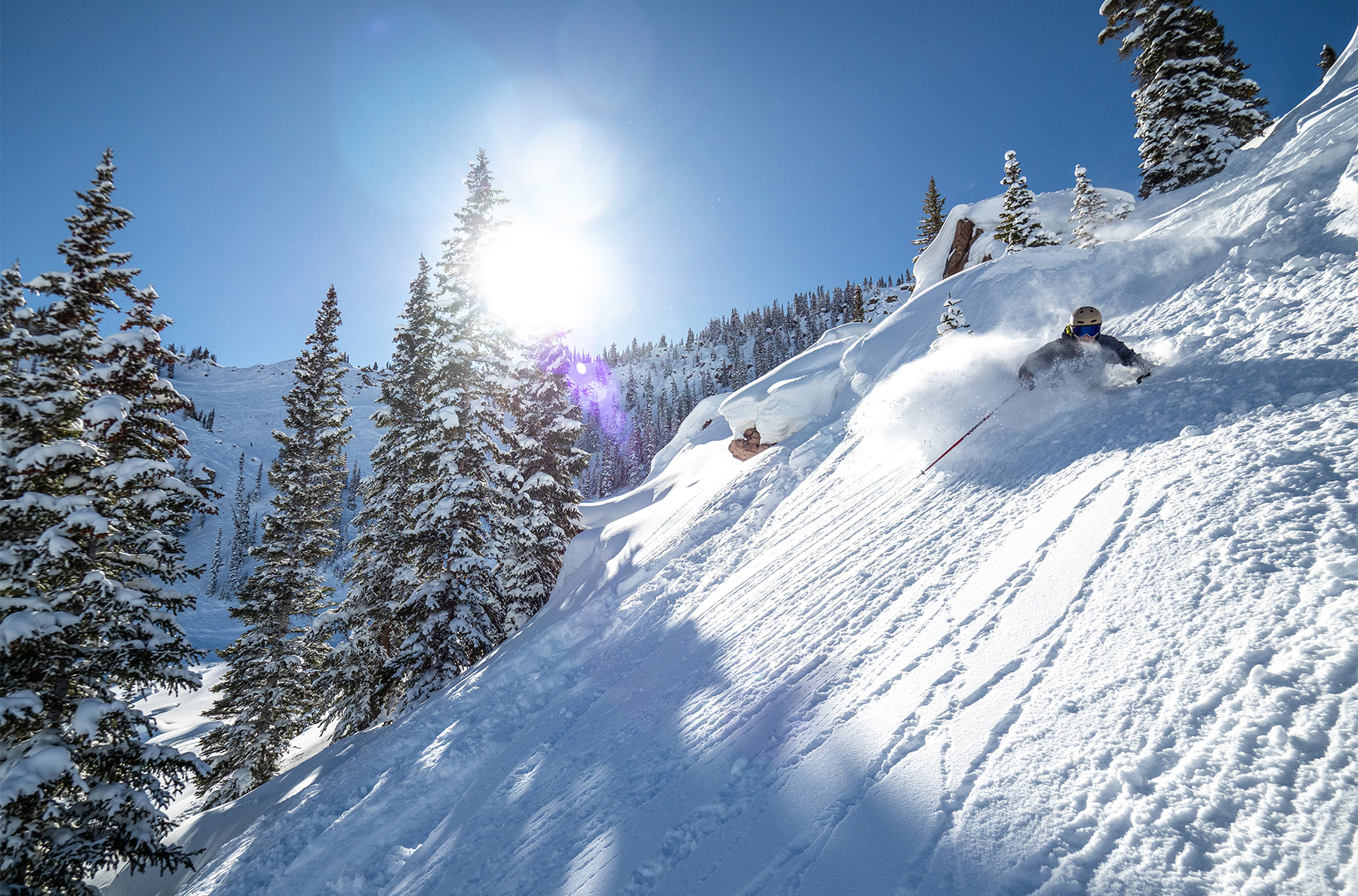

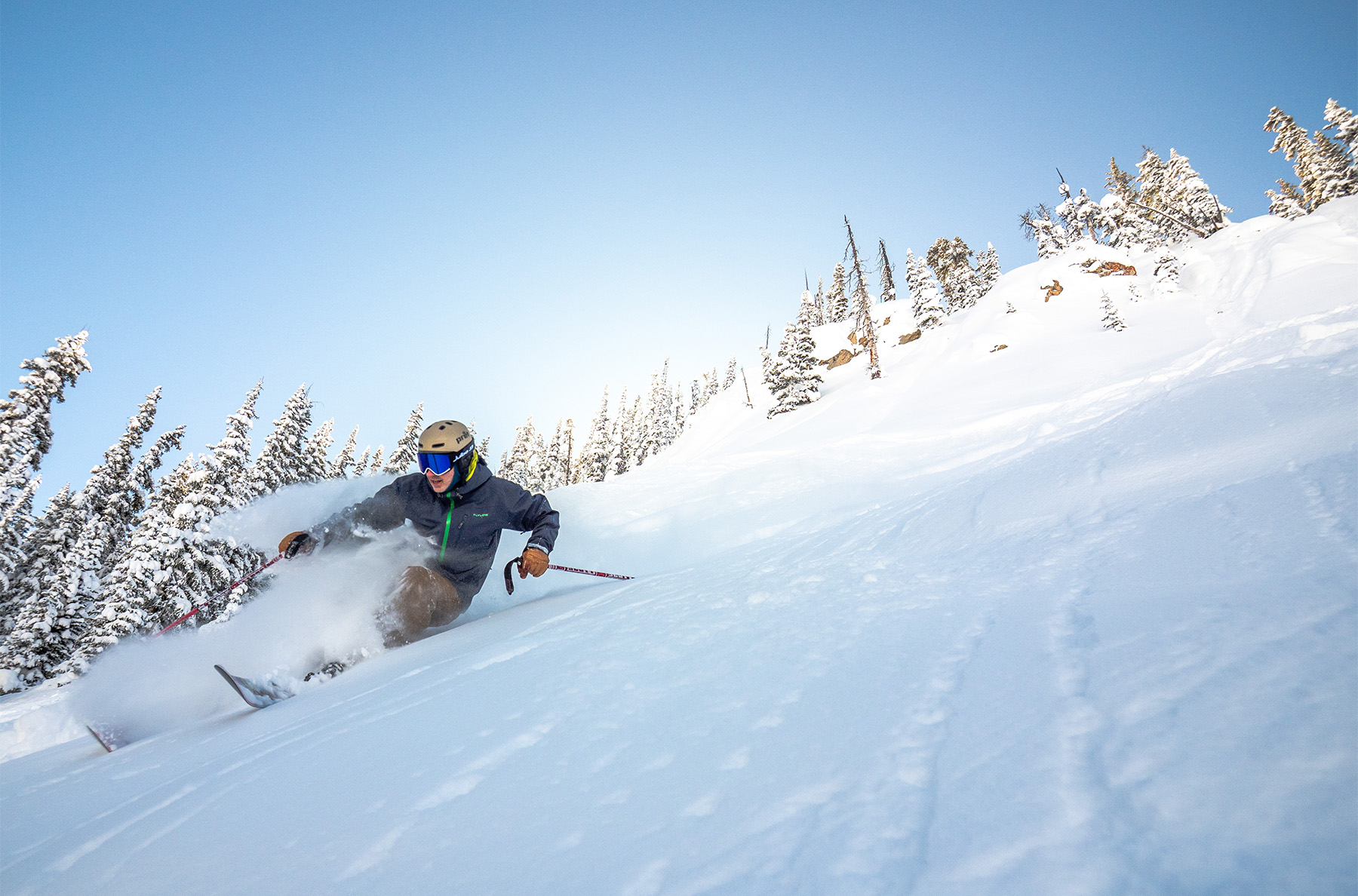
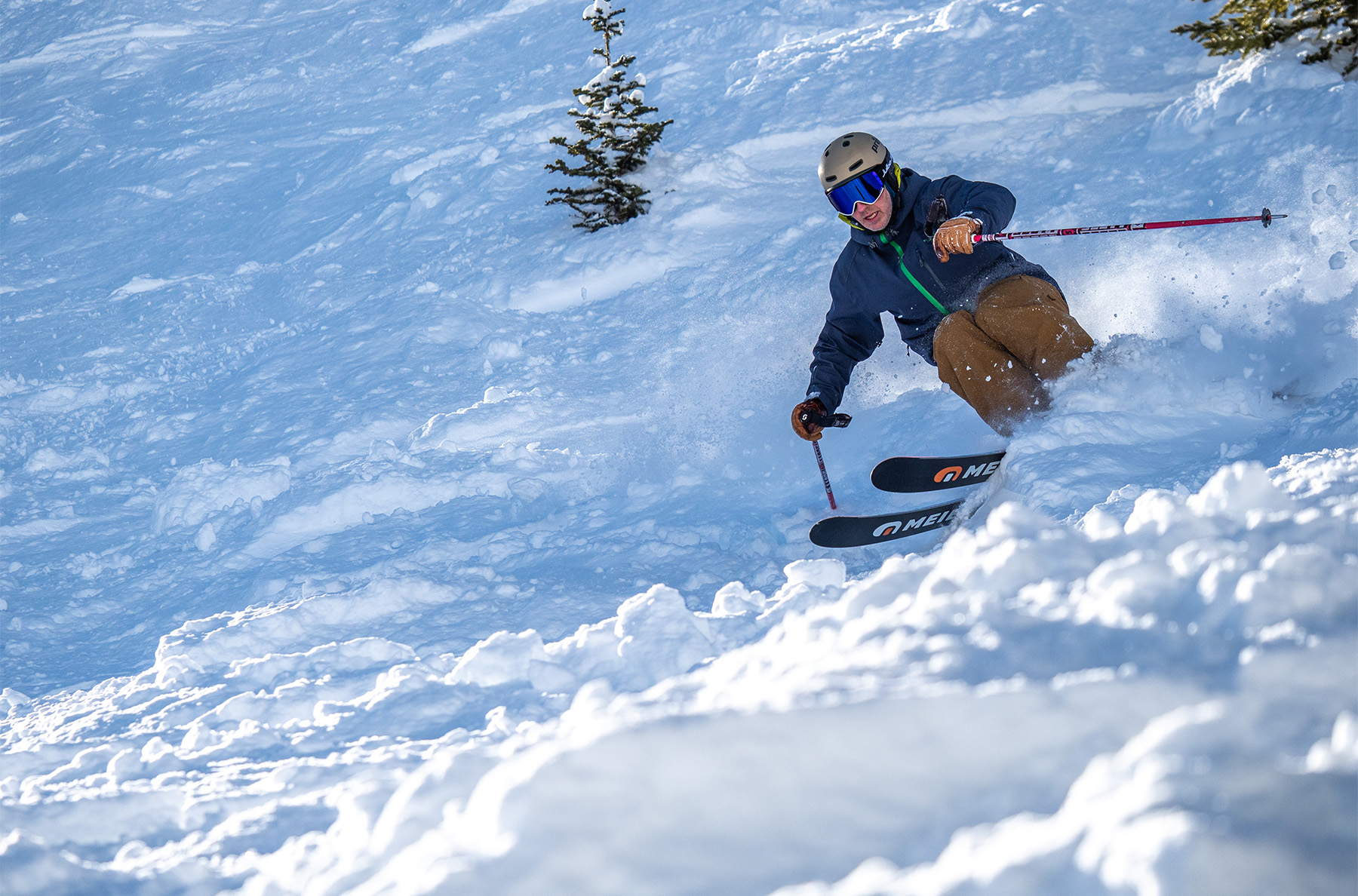
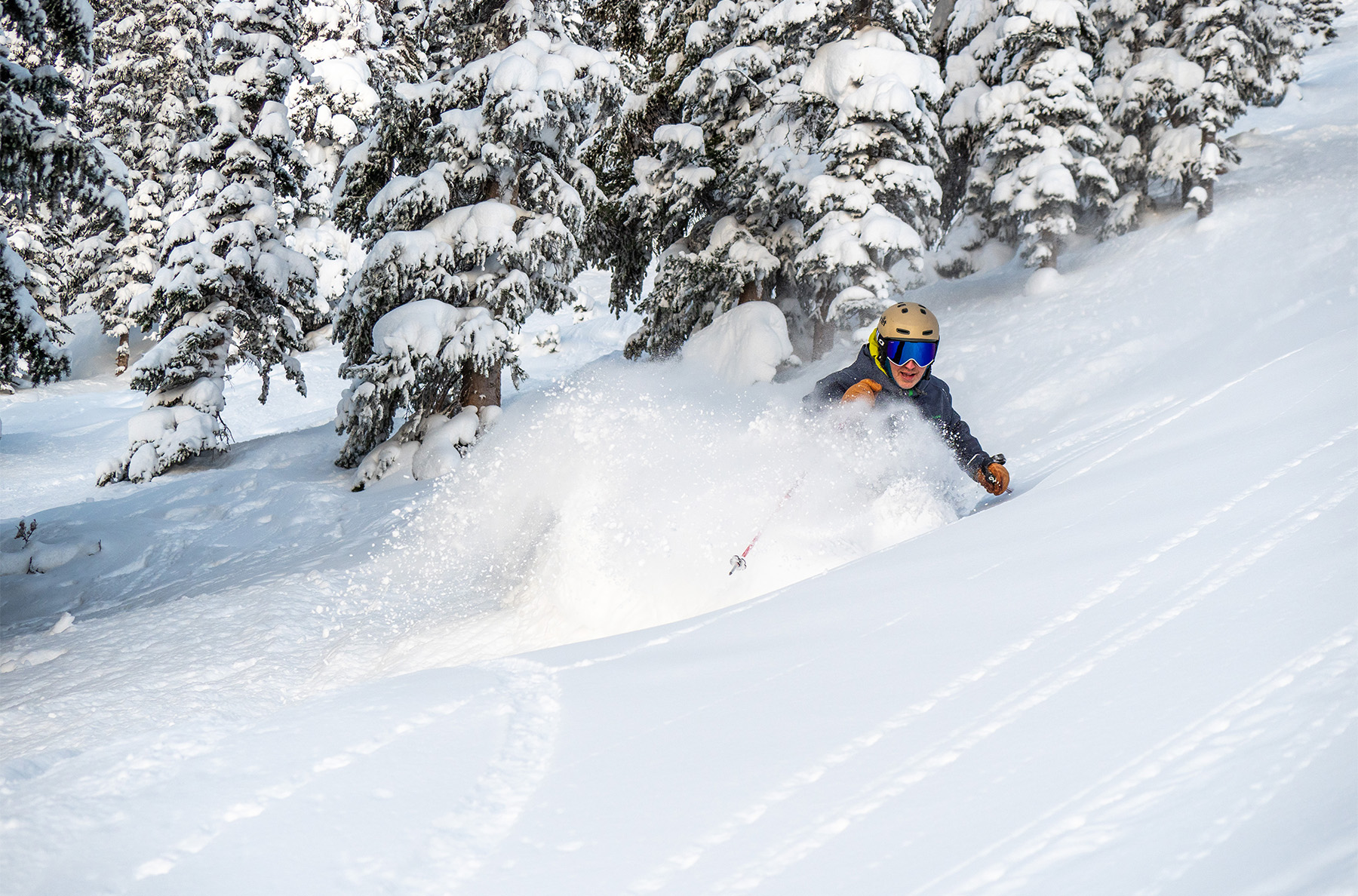
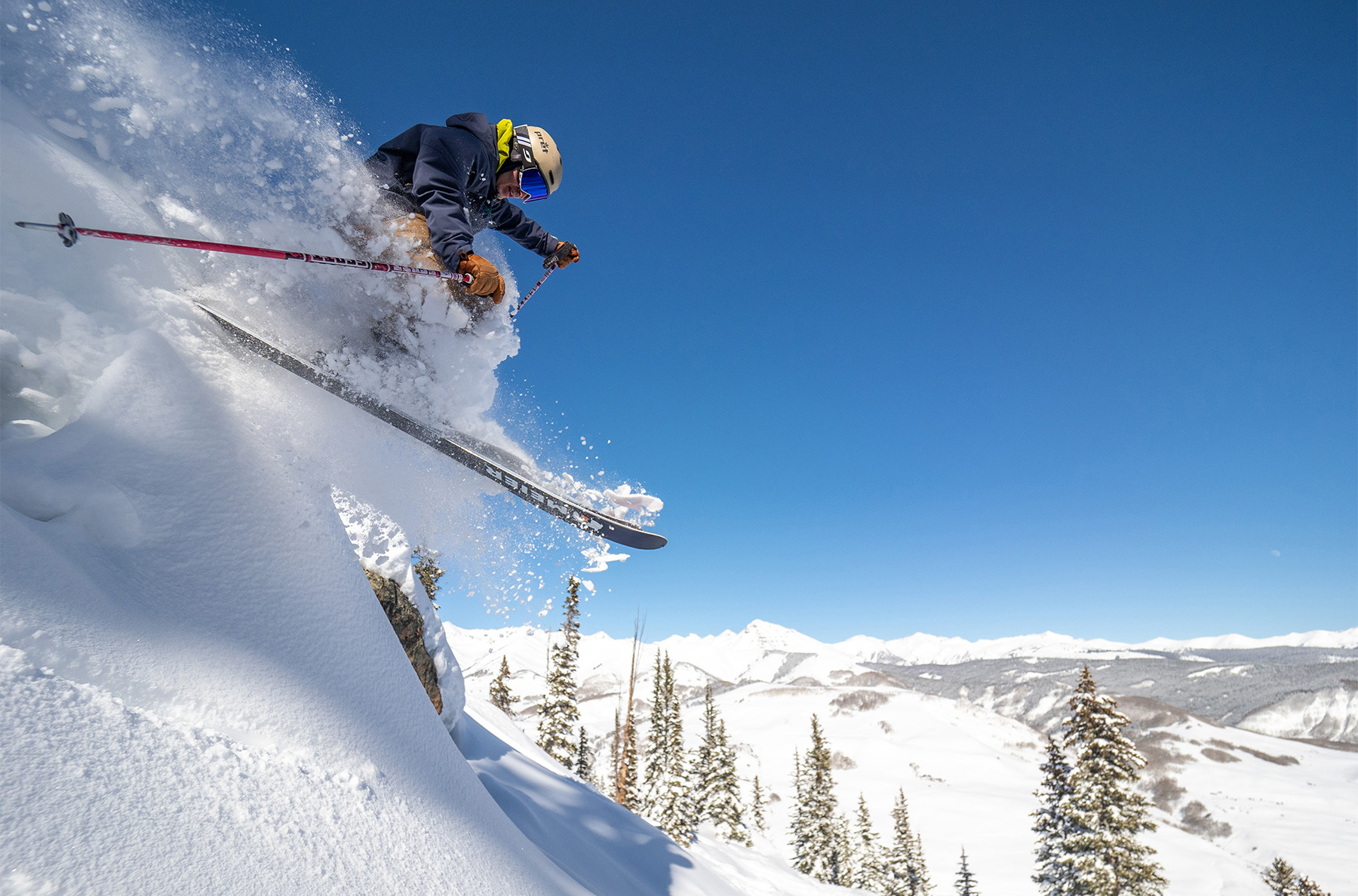
Just a random note that the images in this review are first rate (as is the content, but that’s to be expected). +100 to Jonathan and the photographer.
Thanks, Patrick — Luke took the pics!
Agree with Patrick on the pics. Seeing as Jonathan is in all of them would as always be great to hear his take too
So for local ski areas Snowbird/Alta, Snow basin, and being an advanced skier at 5’11” 205 lbs, I would assume the 192 would serve me better? I’m looking hard at this ski, (wish there was a 188-189cm)